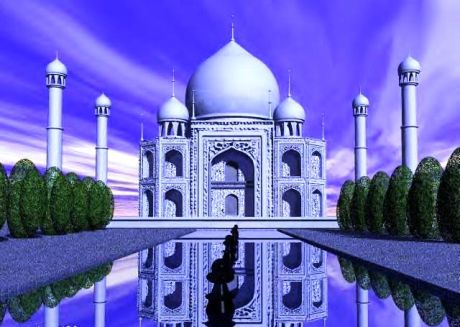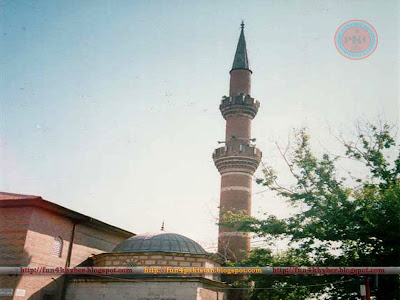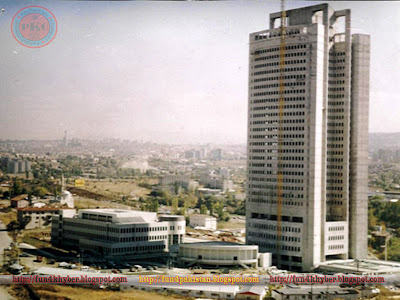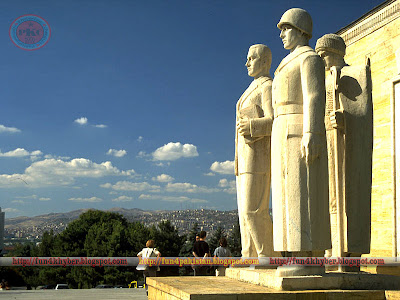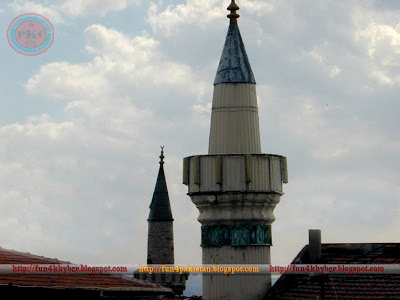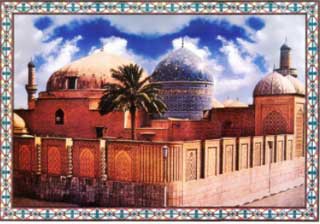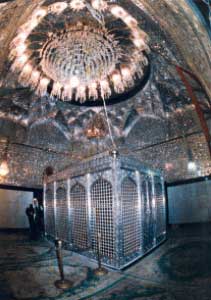شمشاد صاحب کی گذارش پر ایک کلام پیش خدمت ہے، حالات کے تحت یہی لکھا جاسکا ہے،
آپ سب کی رائے کی منتظر رہوں گی۔
نام اسلام کا لو کفر کے سب کام کرو
وہ جو ہے رحمت عالم اسے بدنام کرو
دینی بھائی تمہیں کہتے ہوئے شرم آتی ہے
سوچتے سوچتے چھاتی یہ پھٹی جاتی ہے
قتل معصوموں کا جس نے بھی سکھایا ہے تمہیں
کاش تم سمجھو کہ شیطان بنایا ہے تمہیں
حیف صد حیف کہ تم خود کو مسلمان کہو
خود کشی کو بھی شہادت کہو ایمان کہو
جس نے خوں ریزی کو ایمان بنایا ہوگا
اس نے اپنا کوئی قرآن بنایا ہوگا
میرا قرآن سکھاتا ہے محبت کرنا
کوئی دشمن بھی جو نادم ہو تو شفقت کرنا
لوگ کہتے ہیں کہ تم لوگ مسلمان نہیں
میں یہ کہتی ہوں کہ دراصل تم انسان نہیں
***
بہت اچھے اشعار ہیں فرزانہ نیناں صاحبہ، بہت داد قبول کیجیئے
جس نے خوں ریزی کو ایمان بنایا ہوگا
اس نے اپنا کوئی قرآن بنایا ہوگا
واہ واہ واہ، سبحان اللہ۔
الف عین, حسن علوی , دوست , سارہ خان , سیدہ شگفتہ ,
شاکرالقادری , شمشاد , فاتح , قیصرانی , محب علوی , محمد
وارث , ڈاکٹر عباس
فرزانہ ، لاجواب کلام کیا ہے ۔ مجھے الفاظ نہیں مل رہے کہ کچھ لکھ سکوں ۔ اللہ کرے کہ آپ کے الفاظ ، آپ کی سوچ ایسے سفاک اور قاتل لوگوں کی ہدایت کا سبب بن جائے ۔ آمین۔سیدہ شگفتہ
بہت زبردست لکھا ہے سسٹر ۔سارہ خان
بہت خوب۔۔۔۔۔۔۔ ضبط
بروقت اور برمحل کلام ہے اور اس طرح کی شاعری کی ضرورت بھی ہے۔
شمشاد کی فرمائش اور فرزانہ کے فرمائش پوری کرنے کا شکریہ۔محب علوی
بہت خوب آپا میں نے آج ہی آپ کا یہ خوبصورت کلام پڑا۔ بہت اچھا لگا۔ حسن علوی
بہت شکریہ نیناں جی۔
موجودہ حالات کو مدِ نظر رکھتے ہوئے بہت ہی اچھے اشعار ہیں۔ شمشاد
آپ تمام کی حوصلہ افزائی پر ممنون ہوں، یہ تو فقط جذبات ہیں
اللہ تعالی ان لفظوں میں تاثیر بھی ڈال سکتے ہیں جس کا ہر محب وطن پاکستانی منتظر ہے،
میں کیا میری بساط کیا، ہم وطن سے دور ہیں لیکن دل اسی کے نام پر دھڑکتا ہے،
خمیر تو اسی مٹی کا ہوں، اس کی مہک اپنی جانب کھینچتی ہے،
خدا ہماری ارض پاک کو تباہی و بربادی سے نکالے اور عوام کو عقل سلیم عطا فرمائے۔ آمین
بس یہی میرے دل کی خواہش و دعا ہے۔
اہل محفل بہت شکریہ۔فرزانہ نیناں


Taj Mahal




In 1631 Shah Jahan, emperor during the Mughal’s period of greatest
prosperity, was griefstricken when his second wife, Mumtaz Mahal, died during the birth of their daughter Gauhara Begum, their fourteenth child. Contemporary court chronicles concerning Shah Jahan’s grief form the basis of the love story traditionally held as the inspiration for the Taj Mahal. Construction of the Taj Mahal was begun soon after Mumtaz’s death. The principal mausoleum was completed in 1648, and the surrounding buildings and garden were finished five years later. Visiting Agra in 1663, the French traveller François Bernier wrote the following: I shall finish this letter with a description of the two wonderful mausoleums which constitute the chief superiority of Agra over Delhi . One was erected by Jehan-guyre [sic] in honor of his father Ekbar; and Chah-Jehan raised the other to the memory of his wife Tage Mehale, that extraordinary and celebrated beauty, of whom her husband was so enamoured it is said that he was constant to her during life, and at her death was so affected as nearly to follow her to the grave.
prosperity, was griefstricken when his second wife, Mumtaz Mahal, died during the birth of their daughter Gauhara Begum, their fourteenth child. Contemporary court chronicles concerning Shah Jahan’s grief form the basis of the love story traditionally held as the inspiration for the Taj Mahal. Construction of the Taj Mahal was begun soon after Mumtaz’s death. The principal mausoleum was completed in 1648, and the surrounding buildings and garden were finished five years later. Visiting Agra in 1663, the French traveller François Bernier wrote the following: I shall finish this letter with a description of the two wonderful mausoleums which constitute the chief superiority of Agra over Delhi . One was erected by Jehan-guyre [sic] in honor of his father Ekbar; and Chah-Jehan raised the other to the memory of his wife Tage Mehale, that extraordinary and celebrated beauty, of whom her husband was so enamoured it is said that he was constant to her during life, and at her death was so affected as nearly to follow her to the grave.


 The Taj Mahal incorporates and expands on many design traditions, particularly Persian and earlier Mughal architecture. Specific inspiration came from a number of successful Timurid and Mughal buildings. These include the Gur-e Amir (the tomb of Timur, progenitor of the Mughal dynasty, in Samarkand), Humayun’s Tomb, Itmad-Ud-Daulah’s Tomb (sometimes called the Baby Taj), and Shah Jahan’s own Jama Masjid in Delhi. Under his patronage, Mughal building reached new levels of refinement. While previous Mughal building had primarily been constructed of red sandstone, Shah Jahan promoted the use of white marble inlaid with semi-precious stones. The complex is set in and around a large charbagh (a formal Mughal garden divided into four parts). Measuring 300 meters Ã- 300 meters, the garden uses raised pathways which divide each quarter of the garden into 16 sunken parterres or flowerbeds. A raised marble water tank at the center of the garden, halfway between the tomb and the gateway, and a linear reflecting pool on the North-South axis reflect the Taj Mahal. Elsewhere the garden is laid out with avenues of trees and fountains.
The Taj Mahal incorporates and expands on many design traditions, particularly Persian and earlier Mughal architecture. Specific inspiration came from a number of successful Timurid and Mughal buildings. These include the Gur-e Amir (the tomb of Timur, progenitor of the Mughal dynasty, in Samarkand), Humayun’s Tomb, Itmad-Ud-Daulah’s Tomb (sometimes called the Baby Taj), and Shah Jahan’s own Jama Masjid in Delhi. Under his patronage, Mughal building reached new levels of refinement. While previous Mughal building had primarily been constructed of red sandstone, Shah Jahan promoted the use of white marble inlaid with semi-precious stones. The complex is set in and around a large charbagh (a formal Mughal garden divided into four parts). Measuring 300 meters Ã- 300 meters, the garden uses raised pathways which divide each quarter of the garden into 16 sunken parterres or flowerbeds. A raised marble water tank at the center of the garden, halfway between the tomb and the gateway, and a linear reflecting pool on the North-South axis reflect the Taj Mahal. Elsewhere the garden is laid out with avenues of trees and fountains.  The charbagh garden was introduced to India by the first Mughal emperor Babur, a design inspired by Persian gardens. The charbagh is meant to reflect the gardens of Paradise (from the Persian paridaeza — a walled garden). In mystic Islamic texts of the Mughal period, paradise is described as an ideal garden, filled with abundance. Water plays a key role in these descriptions: In Paradise, these text say, four rivers source at a central spring or mountain, and separate the garden into north, west, south and east. Walkways beside reflecting pool Most Mughal charbaghs are rectangular in form, with a tomb or pavilion in the center of the garden. The Taj Mahal garden is unusual in that the main element, the tomb, is located at the end rather than at the center of the garden. But the existence of the newly discovered Mahtab Bagh or “Moonlight Garden” on the other side of the Yamuna provides a different interpretation — that the Yamuna itself was incorporated into the garden’s design, and was meant to be seen as one of the rivers of Paradise.
The charbagh garden was introduced to India by the first Mughal emperor Babur, a design inspired by Persian gardens. The charbagh is meant to reflect the gardens of Paradise (from the Persian paridaeza — a walled garden). In mystic Islamic texts of the Mughal period, paradise is described as an ideal garden, filled with abundance. Water plays a key role in these descriptions: In Paradise, these text say, four rivers source at a central spring or mountain, and separate the garden into north, west, south and east. Walkways beside reflecting pool Most Mughal charbaghs are rectangular in form, with a tomb or pavilion in the center of the garden. The Taj Mahal garden is unusual in that the main element, the tomb, is located at the end rather than at the center of the garden. But the existence of the newly discovered Mahtab Bagh or “Moonlight Garden” on the other side of the Yamuna provides a different interpretation — that the Yamuna itself was incorporated into the garden’s design, and was meant to be seen as one of the rivers of Paradise.









The Taj Mahal complex is bounded by a crenellated red sandstone wall on three sides. The river-facing side is unwalled. Outside the wall are several additional mausoleums, including those of many of Shah Jahan’s other wives, and a larger tomb for Mumtaz’s favorite servant. These structures, composed primarily of red sandstone, are typical of smaller Mughal tombs of the era. On the inner (garden) side, the wall is fronted by columned arcades, a feature typical of Hindu temples later incorporated into Mughal mosques. The wall is interspersed with domed kiosks (chattris), and small buildings which may have been viewing areas or watch towers, such as the so-called Music House, now used as a museum. The main gateway (darwaza) is a monumental structure built primarily of marble. The style is reminiscent of that of Mughal architecture of earlier emperors. Its archways mirror the shape of the tomb’s archways, and its pishtaq arches incorporate the calligraphy that decorates the tomb. It utilises bas-relief and pietra dura (inlaid) decorations with floral motifs. The vaulted ceilings and walls have elaborate geometric designs, like those found in the other sandstone buildings of the complex.
ANKARA
The city of Ankara lies in the center of Anatolia on the eastern edge of the great, high Anatolian Plateau, at an altitude of 850 meters. It is the center of the province of the same name, which Is a predominantly fertile wheat steppeland with forested areas in its northeast region. It is bordered by the provinces of Cankiri and Bolu to the north, Eskisehir to the west, Konya and Aksaray to the south, and Kirikkale and Kirsehir to the east. The region’s history goes back to the Bronze Age, Hatti Civilization, which was succeeded in the 2nd millennium BC by the Hittites, then the Phrygians (10th century BC); Lydians and Persians followed. After these came the Galatians, a Celtic race who were the first to make Ankara their capital (3rd century BC). It was then known as Ancyra, meaning anchor. The town subsequently fell to the Romans, Byzantines, and Selcuks under Alpaslan in 1073, and then to the Ottomans under Yildirim Beyazit in 1402, who remained in control until the First World War. The town, once an important trading center on the caravan route to the east, had declined in importance by the nineteenth century. It became an important center again when Kemal Atat?ose it as the base from which to direct the War of Liberation. In consequence of its role in the war and its strategic position, it was declared the capital of the new Turkish Republic on the 13th October,1923.
We Have To Wait
A man went to a shop, picked up a beautiful cup and said ” My God ! this cup is so beautiful.”Suddenly the cup started talking to the man.”oh, man, I am beautiful right now, but what was the state of my being before the pot maker made me so beautiful ?’
I was sheer mud when the potter pulled me out from mother earth. I felt wreathed in tremendous pain while being separated from mother earth. But the potter said , ‘JUST WAIT ‘. Then he churned me. I felt giddy when I was churned, and asked him ‘Why are you so cruel ? ‘ The potter said ‘ JUST WAIT ‘.Then he put me into an oven and heated me up. I felt completely burnt. There was tremendous pain and I asked him again ‘ Why are you so cruel ? ‘ He said ‘ JUST WAIT ‘
After that he poured hot paint on me n I felt the fumes and irritation.I again asked him ‘Why are you so cruel ? ‘ He said again ‘ JUST WAIT ‘. he put me into an oven and heated me to make me strong, I felt life was so pain ful hence pleaded with the potter to leave me free. he said ‘JUST WAIT ‘. And finally he took me to a mirror and said ‘ Now look at yourself”. Lo, What a change ! I found myself so beautiful. “
We have to wait ; our struggles have a cosmic purpose. When pur agenda is not fulfilled, it gives us pain. But universe has its own plans.
After that he poured hot paint on me n I felt the fumes and irritation.I again asked him ‘Why are you so cruel ? ‘ He said again ‘ JUST WAIT ‘. he put me into an oven and heated me to make me strong, I felt life was so pain ful hence pleaded with the potter to leave me free. he said ‘JUST WAIT ‘. And finally he took me to a mirror and said ‘ Now look at yourself”. Lo, What a change ! I found myself so beautiful. “
We have to wait ; our struggles have a cosmic purpose. When pur agenda is not fulfilled, it gives us pain. But universe has its own plans.
We have to wait and make our struggles sacred.Greatness lies not in being strong but in the right use of scared strength.
